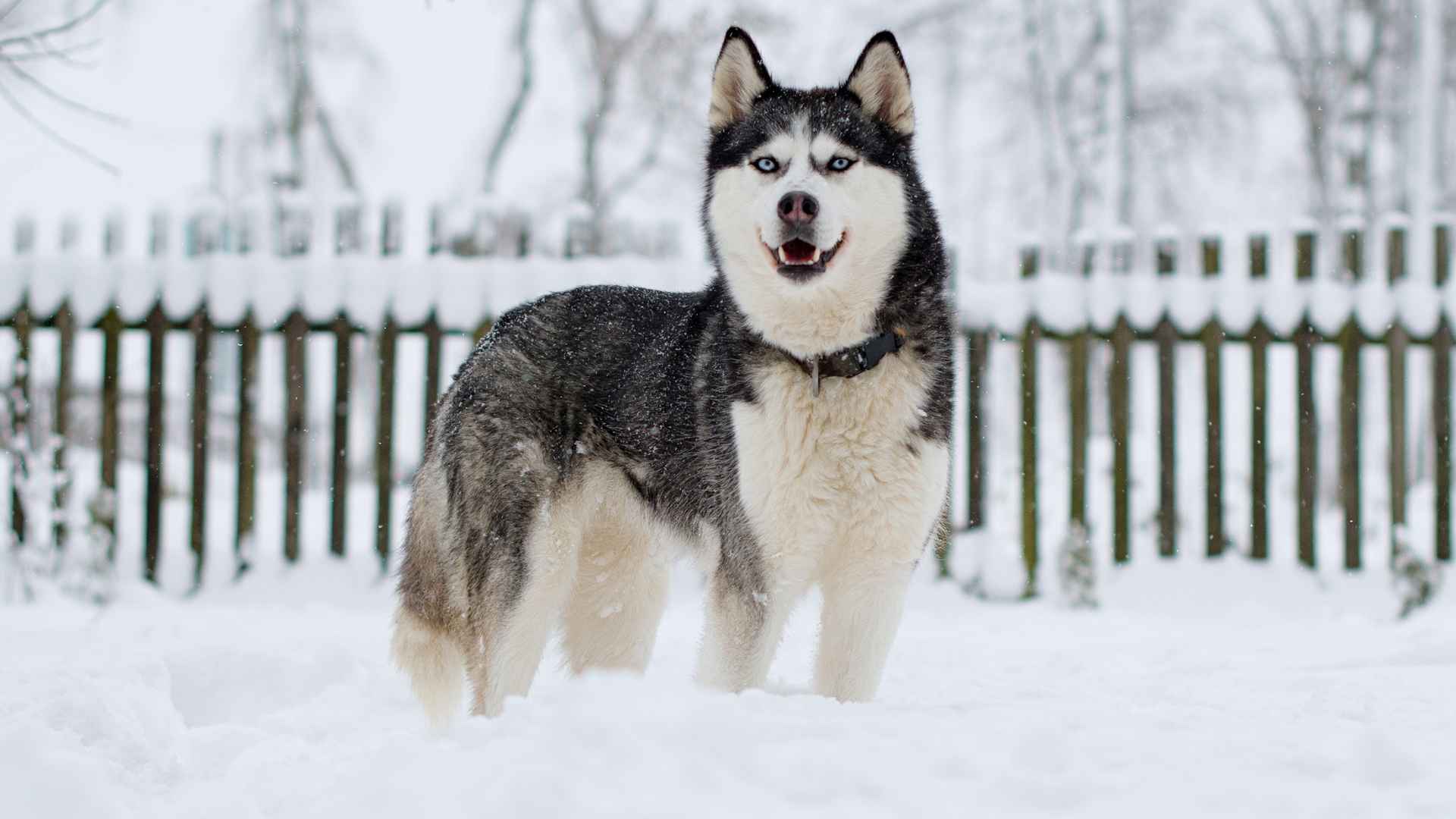There’s something undeniably striking about a dog with piercing blue eyes. Whether set against a snowy coat or framed by a patchwork of colors, blue eyes add an element of mystique and beauty that instantly draws attention. Though rare, this eye color appears in certain breeds due to specific genetic factors, and it’s more than just a quirk of appearance; it’s tied to fascinating science and breed history.
Most commonly, blue eyes in dogs result from either the Merle or Piebald gene. The Merle gene creates a marbled coat with light and dark patches, while the Piebald gene leads to random white spotting. Both genes dilute pigmentation in the eyes, coat, and even paw pads, leading to that distinctive icy stare. However, in breeds where blue eyes aren’t standard, this feature can be considered a deviation from the norm, sometimes even disqualifying dogs from conforming to breed standards in show competitions.
Adding to the allure are dogs with heterochromia, one blue eye and one brown, or even eyes with two colors within the same iris. While enchanting, it’s important to note that unethical breeding practices aimed at producing blue-eyed puppies can lead to serious health issues, especially when two merle carriers are bred together.
Blue-Eyed Dog Breeds
1. Siberian Husky
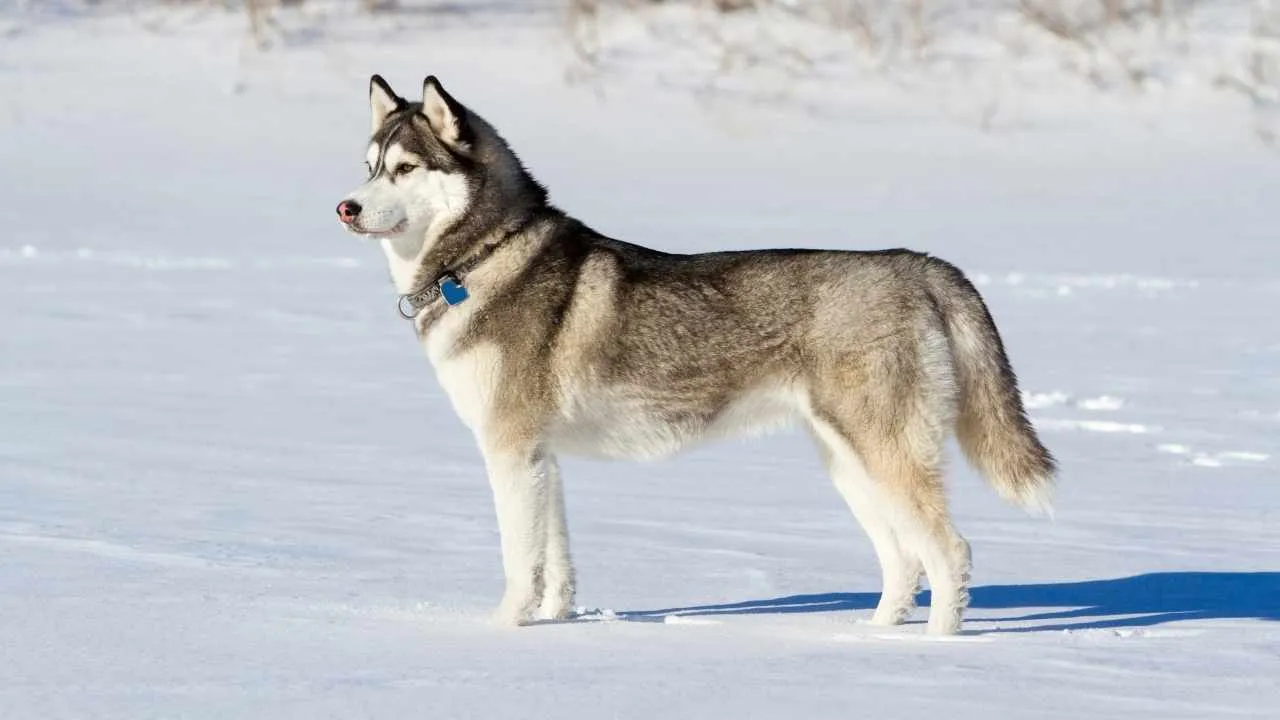
The Siberian Husky is perhaps the most iconic blue-eyed dog breed, known for its wild beauty and electrifying gaze. With a striking resemblance to wolves, these athletic dogs feature plush double coats, erect triangular ears, and expressive facial markings, often enhanced by bright, ice-blue eyes.
Originally bred as sled dogs, Huskies are revered for their stamina, intelligence, and friendly temperament. They thrive in active households and demand both physical and mental engagement to stay content and well-behaved. According to Britannica, the Siberian Husky, true to its background in long-distance sled racing, is a high-energy breed that requires a minimum of one to two hours of daily exercise.
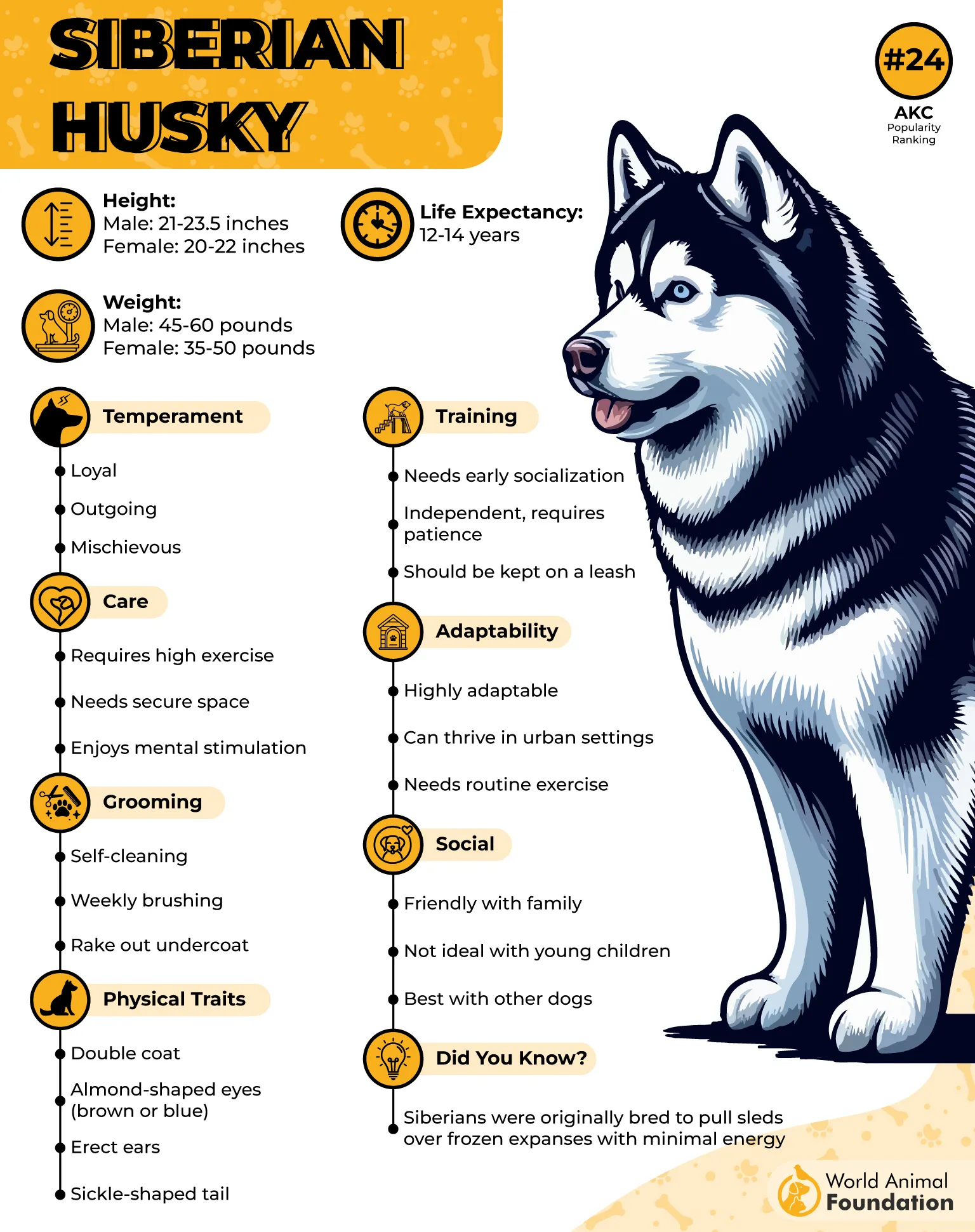
Unique Traits
Unlike other breeds whose blue eyes stem from coat patterns like merle or piebald, the Husky’s mesmerizing stare is primarily linked to a unique mutation on canine chromosome 18, known as the ALX4 gene.
This genetic variation allows them to retain their vivid eye color into adulthood, with some even showcasing heterochromia, one blue and one brown eye, or dual-colored irises. Though all Husky puppies start with baby blue eyes, not all will keep them as they mature.
Fact: A 2023 genetic study of Balto, the legendary sled dog from the 1925 serum run, revealed his rich ancestry included Tibetan Mastiffs and sled dogs from Greenland, boosting his hardiness beyond that of modern Huskies.
2. Australian Shepherd
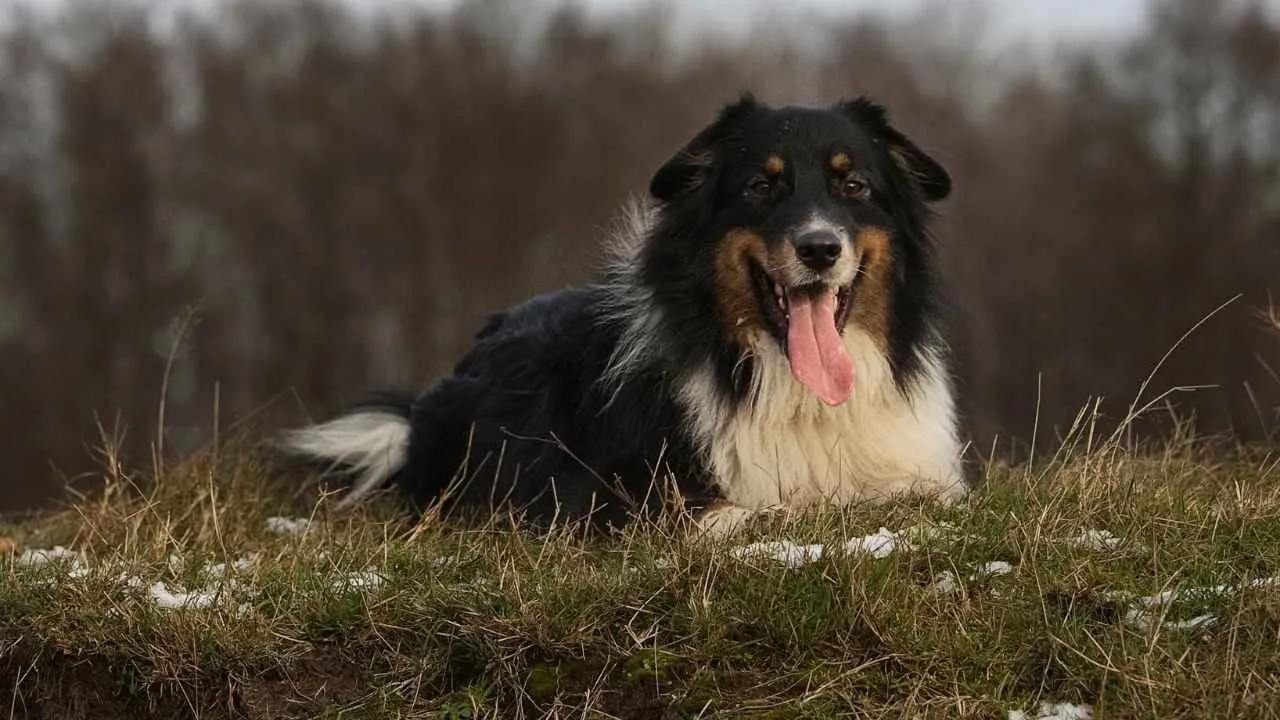
The Australian Shepherd, affectionately known as the “Aussie,” is a brilliant and tireless herding dog with roots that trace back to Europe, though it was refined and popularized in the American West. Revered by ranchers and rodeo performers alike, this medium-sized breed is athletic, agile, and intensely loyal.
Known for their powerful herding instincts and sharp minds, Aussies require consistent mental and physical stimulation to thrive. The AKC notes that Australian Shepherds are exceptionally smart and can easily outwit inexperienced owners. Their expressive eyes, often a vivid blue, only enhance their naturally captivating presence.
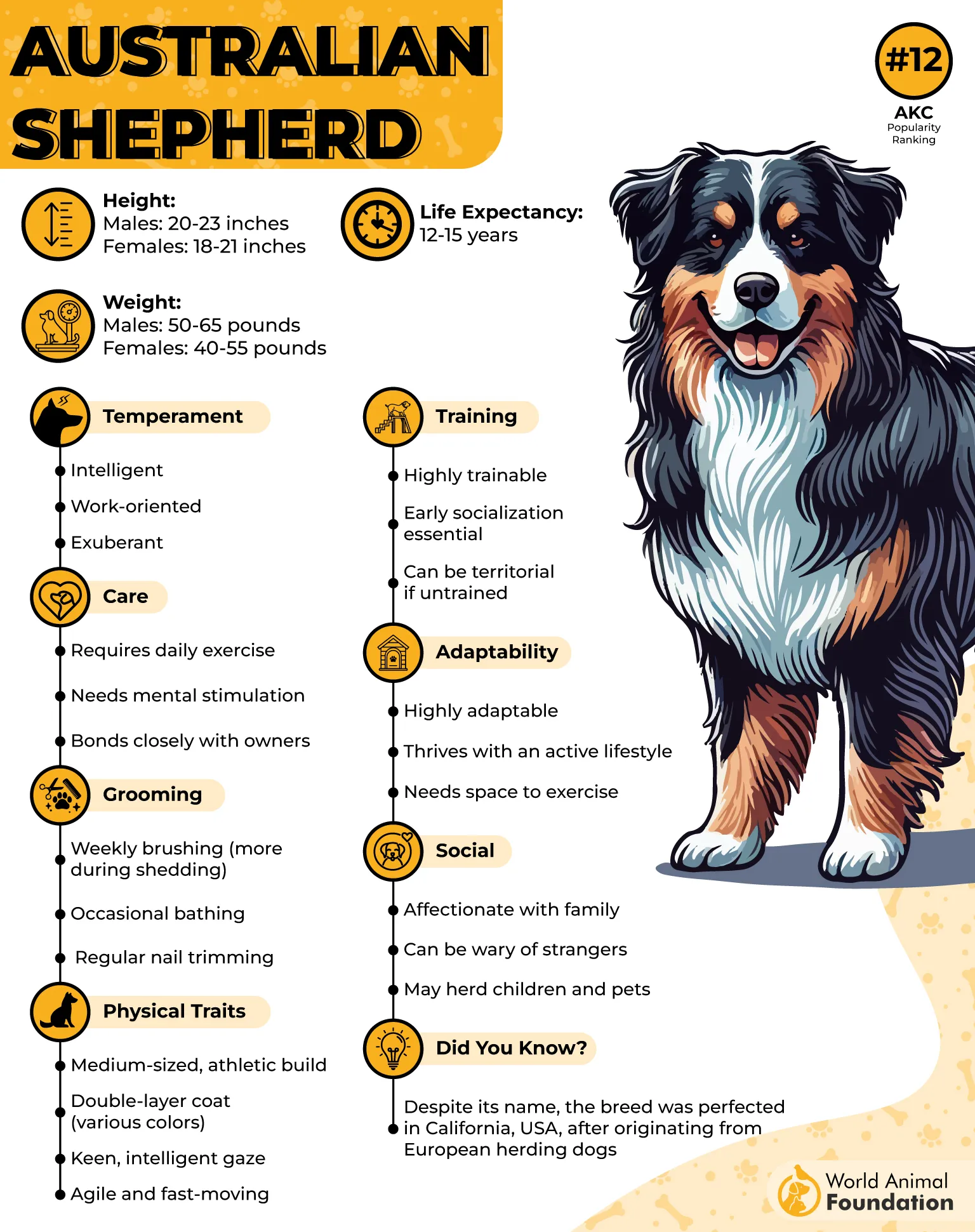
Unique Traits
The Aussies’ dazzling blue eyes are commonly linked to the merle gene, which also produces their signature marbled coat in blue or red shades. This gene doesn’t just create eye-catching patterns; it also influences eye color, leading to possibilities like one blue eye, both eyes blue, or marbled eyes featuring both blue and brown in the same iris.
These variations, paired with their energetic temperament and sleek build, make the Australian Shepherd one of the most visually and behaviorally dynamic breeds.
Fact: The Miniature American Shepherd, a smaller relative of the Aussie, also inherits the merle gene and often sports the same striking blue eyes and coat patterns in a more compact frame.
3. Border Collie

Famed for their unmatched intelligence and boundless energy, Border Collies are agile herding dogs originally bred to manage flocks across the rugged landscapes of Great Britain. Today, they continue to thrive in both working roles and as dynamic family companions.
With their quick reflexes, spunky personality, and sharp problem-solving skills, Border Collies excel in activities like agility courses, obedience trials, and herding competitions. PetMD reports that Border Collies are known for their boundless energy.
As a herding breed, they thrive when given a task or purpose. Their medium-length double coats come in various colors, including black and white, red, blue, lilac, and even merle, often matched with a piercing blue-eyed gaze.
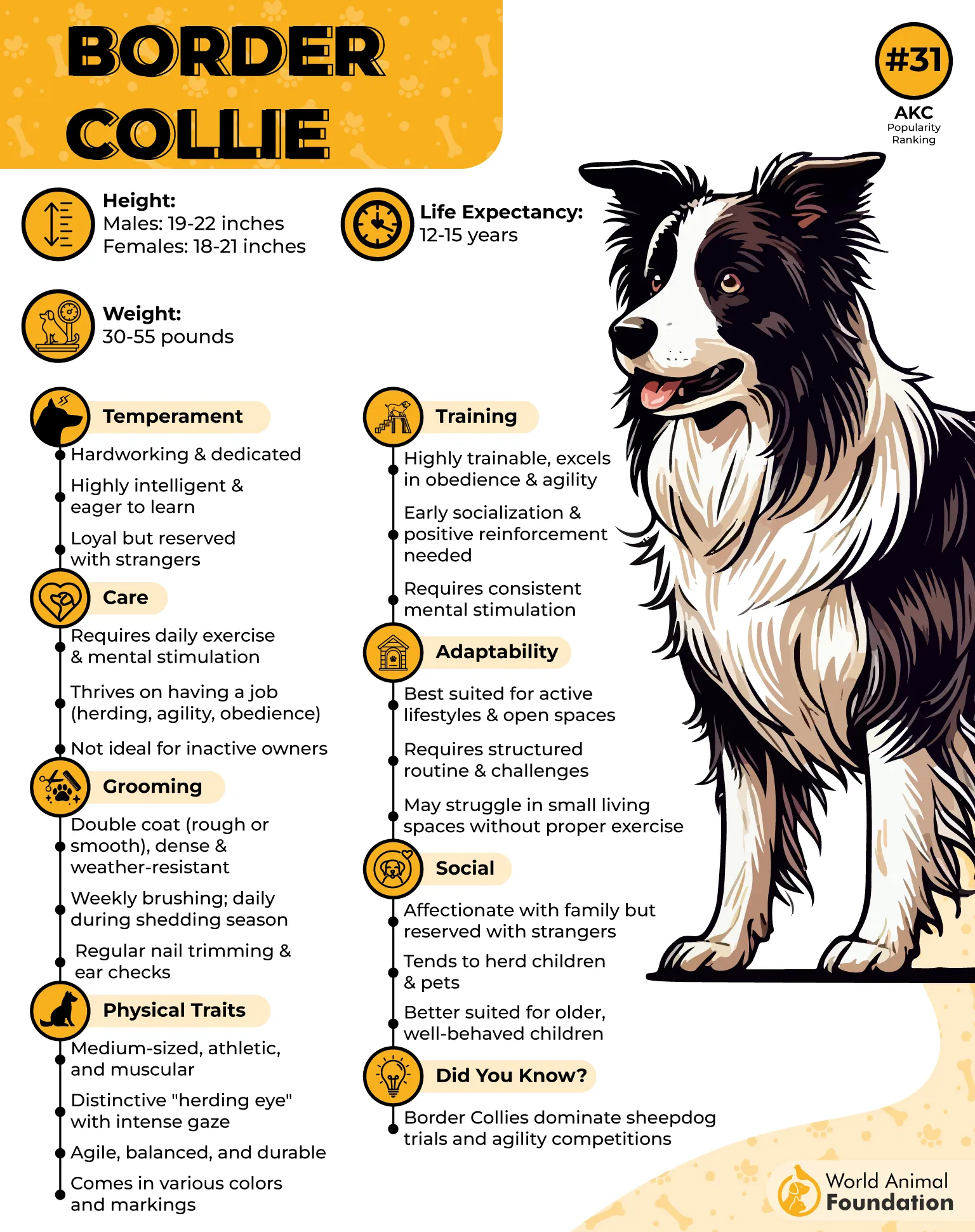
Unique Traits
Blue eyes in Border Collies are most commonly linked to the merle gene, which also influences their coat pattern with irregular patches of lighter and darker shades. Dogs with this gene often display one or both blue eyes, sometimes even with distinct flecks of color in each.
Though not all Border Collies have blue eyes, those with merle coats frequently do, making their intense gaze as striking as their intelligence.
Fact: Blue-eyed Border Collies often carry the merle gene, a genetic trait that not only affects eye color but also gives them their distinct, irregular coat markings.
4. Cardigan Welsh Corgi

Compact yet powerful, the Cardigan Welsh Corgi is a charming blend of working grit and household companion. Known for their elongated bodies, short legs, and bushy tails, Cardis were originally bred in Wales to herd cattle and guard rural properties.
Despite their size, they move with surprising speed and agility, making them excellent herders and alert watchdogs. Today, they bring their loyal and playful personalities into homes where they thrive on affection, training, and plenty of outdoor activity.
Unique Traits
One of the most visually captivating features of some Cardigan Welsh Corgis is their blue eyes, particularly in individuals with blue merle coats. This distinctive eye color comes from the Merle gene, which creates beautiful, marbled patterns and bright, icy stares.
Unlike their Pembroke cousins, who rarely display blue eyes, Cardigans often carry this trait, especially when the merle pattern is present. Their oversized ears, expressive faces, and vibrant eyes make them especially unforgettable among blue-eyed breeds.
Fact: The Cardigan Welsh Corgi is the older of the two Corgi breeds and was originally developed to herd livestock and protect unfenced farms in rural Wales.
5. Weimaraner
The Weimaraner, often referred to as the “Gray Ghost,” turns heads with its ethereal silver-gray coat and light, haunting eyes. Bred in Germany for tracking and hunting large game, this athletic breed excels in endurance, speed, and sharp instinct.
Known for their deep loyalty, Weimaraners are affectionate companions who tend to stay close to their humans, often trailing behind like a silent shadow. While they make alert and protective pets, their bold temperament requires an experienced handler who can match their energy and confidence.
Unique Traits
One of the most eye-catching features of the Weimaraner is its pale gray-blue eyes, especially prominent in puppies and young adults. These icy eyes often soften to a light amber with age, though some retain their blue hue.
The breed’s signature look is sometimes enhanced by a piebald coat variation, which can lead to solid gray coats with a white chest patch, traits often associated with blue-eyed individuals. While not the result of the merle gene, this coat pattern still influences pigment dilution, contributing to their mesmerizing gaze.
Fact: The American Kennel Club notes that piebald-coated Weimaraners are especially likely to have two striking blue eyes, adding to their ghost-like mystique.
6. Dalmatian
Dalmatians are instantly recognizable for their sleek white coats patterned with bold black or liver-colored spots, but their striking blue eyes often captivate just as strongly. Athletic and intelligent, these dogs were once prized as carriage escorts, trotting alongside horse-drawn vehicles as both guardians and stylish companions.
Known for their boundless energy and sharp minds, Dalmatians flourish in homes where they can exercise regularly and engage in stimulating activities. Though affectionate and even-tempered, they’re also known for being independent and determined.
Unique Traits
The signature coat and stunning blue eyes of the Dalmatian are both attributed to the piebald gene. Dalmatians always carry two copies of this gene, making it a defining characteristic of the breed. Blue eyes are more likely to appear in these dogs, and while visually stunning, they can be associated with a higher risk of hearing impairments, a known consequence of piebald-linked pigmentation changes in the inner ear.
Fact: Dalmatians are born completely white; those famous spots only begin to appear a few weeks after birth as their piebald genetics start to express.
7. Catahoula Leopard Dog
Bold, intelligent, and brimming with energy, many Catahoula Leopard Dogs stand out for more than just their work ethic. Bred in Louisiana for herding, hunting, and guarding livestock, this powerful and agile breed is built for endurance.
Though serious while working, Catahoulas are affectionate and playful at home, especially once they establish their role within the family. They require structured guidance and early socialization, but in the right environment, they’re deeply loyal and gentle companions.
Unique Traits
One of the most visually distinctive breeds, the Catahoula Leopard Dog often sports a stunning coat marked by leopard-like spots. This mottled or piebald coat, combined with the merle gene, frequently results in dazzling blue eyes, marbled irises, or heterochromia, one blue and one brown eye.
The interplay of coat and eye color gives each dog a uniquely wild, captivating appearance. These genetic traits not only contribute to their charm but also highlight their deep-rooted history as adaptable, multi-talented working dogs.
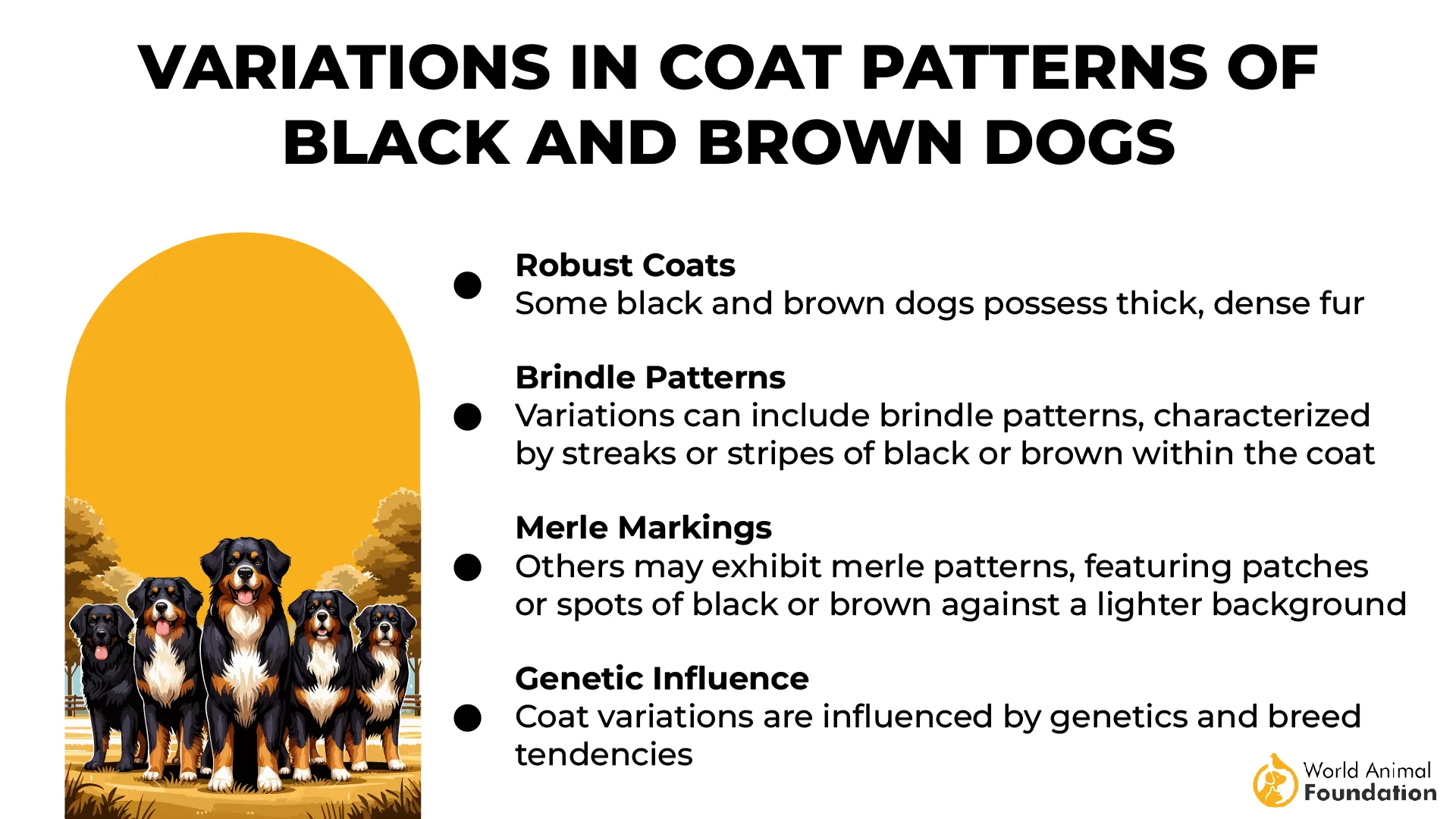
Fact: The Catahoula Leopard Dog is the only breed known to have originated in Louisiana, where it was prized for its versatility and striking, blue-eyed stare.
8. Alaskan Klee Kai
The Alaskan Klee Kai is a petite powerhouse of energy and intelligence, often drawing comparisons to the Siberian Husky due to its striking resemblance. With a compact frame and keen, alert demeanor, this breed makes an excellent watchdog and loyal family companion.
Originally developed in the 1970s, the Klee Kai remains a relatively rare breed, cherished for its spirited personality and captivating appearance. These dogs typically display darker shading along the back and head, with lighter markings on the chest, face, and underbelly, especially in those with a merle coat.
Unique Traits
What truly sets the Klee Kai apart in the realm of blue-eyed dog breeds is its genetic connection to the Siberian Husky. Many Alaskan Klee Kai possess one or two copies of the ALX4 gene mutation, which contributes to their piercing blue or heterochromatic eyes.
While any eye color is acceptable in the show ring, blue eyes remain a striking and commonly admired feature of this breed. Their appearance is further enhanced by facial masks and symmetrical markings.
Fact: Around 60% of Alaskan Klee Kai in Embark’s genetic database carry at least one copy of the gene linked to blue eyes, inherited from their Husky ancestors.
9. Great Dane
Commanding in size yet remarkably gentle in nature, the Great Dane is a majestic figure among dog breeds. Known as the world’s tallest dog, this German-born giant is revered for its patient demeanor and loyal personality.
Despite their imposing presence, Danes are affectionate and calm, often referred to as “gentle giants.” However, they’re also alert and make formidable watchdogs, willing to defend their territory if necessary. Beyond their size and stature, some Great Danes turn heads for another reason: their striking blue eyes.
Unique Traits
Blue eyes in Great Danes are typically associated with specific coat types, particularly Harlequin, Merle, and Piebald patterns. These eye-catching variations are genetically linked to diluted pigmentation, allowing blue to emerge in one or both eyes.
While not all adult Danes retain their blue eyes into maturity, those with these coat types are more likely to showcase the rare trait. According to experts, blue eyes are accepted in the show ring for Danes with merle or harlequin coats, which together represent a significant portion of the breed population.
Fact: Around 40% of Great Danes tested through Embark have either a merle or harlequin coat pattern, making blue eyes relatively common in this breed.
Conclusion
There’s a captivating allure to a dog with blue eyes, a trait both beautiful and rare. As we’ve explored, most dog breeds with blue eyes owe this striking feature to genetic influences such as the merle gene or piebald coat patterns, both of which dilute pigmentation in the eyes and coat.
While breeds like the Catahoula and Husky often exhibit heterochromia or partially blue eyes, other dogs can also carry the merle gene, though in some breeds, this can be controversial due to health risks associated with breeding for merle coat patterns. It’s important to recognize that not every blue-eyed dog fits breed standards, and some may even have light blue, brown, or amber eyes, or a mix of both. Unique looks often come with genetic intricacies, especially when appearance is prioritized over health.
Whether you’re drawn to a bold pack dog, a striking wiener dog, or a lesser-known pit bull with mesmerizing eyes, understanding the role of genetics, coat color, and ethical breeding is essential when admiring or choosing a blue-eyed canine companion.


